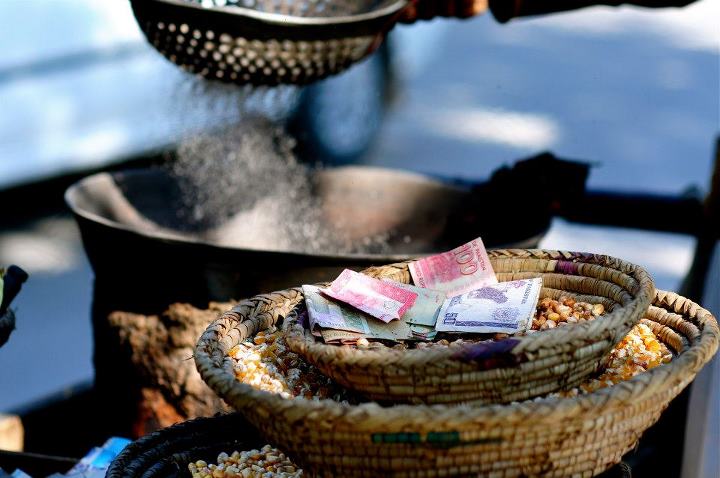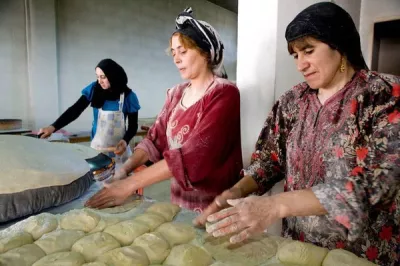Islamic Microfinance in Yemen: Challenges and Opportunities
Political upheaval and ongoing violence have hindered development in Yemen, especially since the onset of the Arab Spring in 2010. In an effort to foster hope and stability among Yemen’s poor, who have been disproportionately affected by the country’s turmoil, Al-Amal Microfinance Bank is working to introduce a range of Sharia-compliant microfinance products aimed at reaching the unbanked.
Al-Amal’s experience is in many ways a cautionary tale about the promise—and pitfalls—of introducing financial products that comply with Islamic law. On one hand, such product offerings can be more attractive to poor clients who are otherwise skeptical of conventional financial services because they violate Islamic principles against interest. On the other hand, once these products are offered, demand for them can far exceed the capacity of existing microfinance institutions to provide them in a sustainable and affordable way.

Photo Credit: Huma Akram
Limited Product Offering
That’s why institutions like Al-Amal are often forced to limit their suite of Sharia-compliant products to one or more products that are relatively simple to administer and offer a clear return. In Al-Amal’s case, our signature Islamic product is murabaha.
As explained in the recent CGAP Focus Note, “Murabaha is a ‘cost plus mark-up’ sale contract often used to finance goods needed as working capital. Typically, the client requests a specific commodity for purchase, which the financier procures directly from the market and subsequently resells to the client, after adding a fixed ‘mark-up’ for the service provided. Ownership of the commodity (and the risk inherent thereto) strictly lies with the financier until the client has fully paid the financier. The mark-up is distinct from interest because it remains fixed at the initial amount, even if the client repays past the due date.”
At Al-Amal, this mark-up ranges between 14.5% (for purchases more than $5,000) and 24% (for purchases below $5,000). Despite these seemingly high rates—which are necessary to keep the product cost-effective—murabaha is the most popular product among Al Amal’s clients. This is consistent with industry trends worldwide.
Diversifying products
For Islamic microfinance to be a viable core business of financial providers, however, more products must be developed. One opportunity for diversifying Al-Amal’s Sharia-compliant product offering is ijara, a leasing product which the bank is currently pilot testing. Ijara offers clients the opportunity to “rent-to-own” a fixed asset that can contribute to the success of an enterprise or simply improve the living conditions of a client and his or her family.
Al-Amal’s ijara product—which won the 2010 CGAP Islamic Microfinance Challenge—will be rolled out as a standard product offering after an assessment of the pilot phase is concluded by the end of this year.
Challenges
The success of that roll out, as well as further development of Al-Amal’s murabaha offering and the introduction of other Sharia-compliant products, will hinge on the bank’s ability to reach Yemen’s rural poor, who represent some 80 percent of the country’s population.
Challenges associated with that demographic reality include poor infrastructure, including a dearth of formal financial services, widespread illiteracy, and a lack of consensus among the country’s Islamic scholars about what makes a financial product Sharia-compliant.
Ultimately, how Al-Amal’s current and potential clients perceive the value of its Islamic products may well determine the pace and success of their development.
---- The author is the international partnerships specialist at Al-Amal Bank.
For a blog series featuring finalists of the Islamic Microfinance Challenge 2010, click here.




Comments
Appreciably the uniqueness of
Appreciably the uniqueness of sharia compliant MF product be it murabha or ijara are a)avoidance of mis utilization loan, b) creation of income generating asset, c) security to the loan product d) income generation certainty and e)more institutional accountability for product functioning
What is the concern from poor man's perspectives under MF realm?.The mark up ranges from 14.5% to 24% and it is higher for purchase value less than $5000 which accommodates most of the poor clients. Although it is argued that this is consistent with industry trend world wide, this appears to be inconsistent with microfinance practice world wide for the poor MF client
Dr Rengarajan
Continuing on Dr Rengarajan's
Continuing on Dr Rengarajan's argument, I would like to ask CGAP whether in its experience with Islamic Finance the "mark-ups" are higher than the interest rates charged by competing non-Islamic micro-/financial institutions in the same area? And if Mark-Ups are higher or similar and with the objective of paying for the financial institution's operating costs (1) what are the benefits for the poor and (2) are they then not per definition Haram, against Islamic principles as a mark-up is a COST and a Price on lending.
Islam's RIBA prohibition follows the Jewish and Old-Testament (Christian) law of not lending to a poor brother (Deuteronomy, Leviticus) against a fixed interest rate - USURY. Only centuries later Jewish and Christian leaders supported the interpretation of the Usury prohibition into relative, abusively high IR or other abusive lending practices - so only excessive, "usurious" practices became forbidden. And even the 3rd Caliph Uzman, who finalised writing the holy Quran apparently admitted the confusion on the interpretation of one of the Prophet Muhammad's (MPBUH) latest verses (on Riba) before his passing on. And Islamic history knows specific market rules and public officials to determine such abusive economic activities - if I remember well the term is Mukhtasar.
Finally and what is most important is that all agree that religion does not need to be the basis for social finance and no religion can claim exclusive ownership of social respect and ethical banking. In my view it is absolutely necessary that CGAP, World Bank, UN and other Microfinance / Financial Inclusion experts discuss these issues and so also contribute to to interfaith respect, maybe one of the most important conditions for achieving global peace and successful poverty alleviation.
Further to my comment
Further to my comment yesterday, the term I was looking for was "Muhtasib", who was one of the highest public officials in Islamic societies. The Muhtasib was (and in some countries still is) responsible of supervising markets and its trade and services activities. The "Banking Mohtasib" is the current banking ombudsman in Pakistan.
In continuation of Peter’s
In continuation of Peter’s conditionals for achieving global peace through interfaith respect and poverty alleviation , I like to high light some insights on these means for the said task.
The task of achieving global peace demands for shaping the humanity for the welfare of all irrespective of race, color, creed, community, religion and caste .Human being is culturally diverse. But ethical values in all religion are the same as reflected in vision of various communities in the world with the following preaching of different religions. To quote
“An Islamic body of discipline and fellowship,A Hindu – Baha`i mind of unity in diversity and universality,A Sikh – Bhuddist-Jain heart of courage, compassion and non-violence,A Parsi intellect of creativity,A Jewish will of Indomitability,A tribal conscience of cosmic solidarity,A Christian spirit of forgiveness and self-sacrificing”
Deciphering these inter religious ethical values would reveal the core point on human conduct for harmonious living and human welfare towards bringing global peace. On similar account despite the diversity in the names and values of inter national currencies , the functions of the money is also the same be it called rural financing, poverty financing, agricultural financing, Islamic financing, Micro financing, priority sector financing, weaker sector financing, SME financing, for that matter.. The ways and means in which it is handled matters here for influencing the welfare of humanity either positively or negatively. For this an enabling environ is therefore necessary with ethically nurtured human behavior in both supply and demand sides for deciding the right way for interfaith respect.
In the case of poverty alleviation, it should start with the bottom poor first with appropriate safety nets and MF products and services on the models of CGAP-BRAC graduation models . This requires strong advocacy for financial access to the poorest . To wit unless this segment of the pyramid is lifted sustainably , poverty cannot be alleviated . In the process only the viable poor or transient poor who are near to BPL will be benefitted and this breeds inequality even in the pyramid which is more harmful than poverty. Here what is emphasized is the need for prudential identification of target group , appropriate products and sequencing them. Currently this aspect is grossly missing in MF industry taking advantage of brand “ Microfinance” and the words like ‘poor’ or ‘rural’ . Evidently despite technology intrusion, the excluded bottom remains excluded and ironically even some of the included are excluded subsequently
Perhaps for effecting both the above means for said global peace, strong advocacy by CAGP is possible with the change in their logo CAGP with “ Advancing financial inclusion to improve the life of “the poorest” instead of “poor”.
Dr Rengarajan
Add new comment